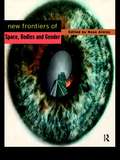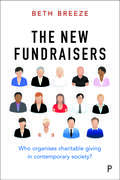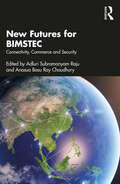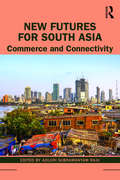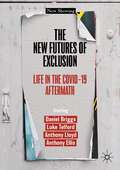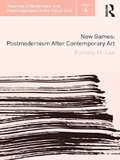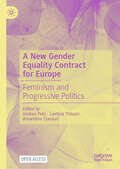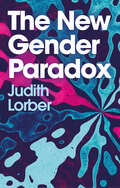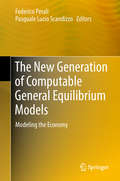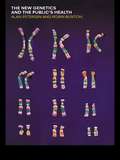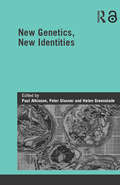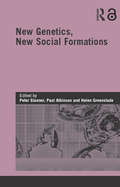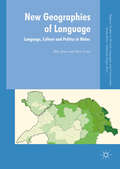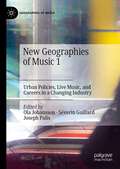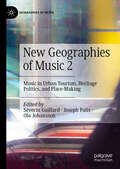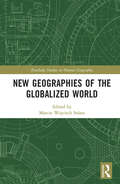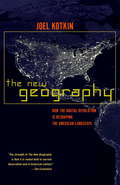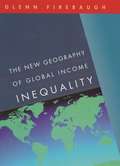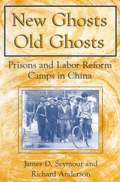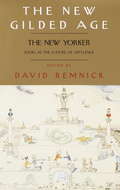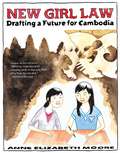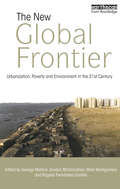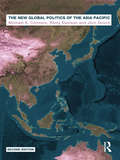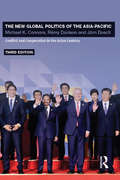- Table View
- List View
New Frontiers of Space, Bodies and Gender
by Rosa AinleyThis collection unravels the stereotypical images of gender and space and presents a series of new explorations into both 'lived' and 'imagined' spaces. In New Frontiers of Space, Bodies and Gender leading contemporary writers from across an eclectic mix of disciplines, examine an exciting array of issues such as: * Jamaican Ragga music and female performance * Feminist anti-violence work * Pregnant women's experience of shopping centres * The fear of crime felt by women using urban greenspace * Implications of technology in gendering identities This book forges new parameters for debates of gender and space, leaving behind the simple focus on women-as-victim in the public arena and remapping considerations of space which look beyond bricks and mortar. Contributors: Aylish Wood, Robyn Longhurst, Ali Grant, Lesley Klein, Affrica Taylor, Inga-Lisa Sangregorio, Jacqueline Leavitt, Tracey Skelton, Nina Wakeford, Jos Boys, Sally R. Munt, Doreen Massey, Jacquie Burgess, Maher Anjum, Lynne Walker.
The New Fundraisers: Who organises charitable giving in contemporary society?
by Beth BreezeCharitable fundraising has become ever more urgent in a time of extensive public spending cuts. However, while the identity and motivation of those who donate comes under increasingly close scrutiny, little is known about the motivation and characteristics of the ‘askers’, despite almost every donation being solicited or prompted in some way. This is the first empirically-grounded and theorised account of the identity, characteristics and motivation of fundraisers in the UK. Based on original data collected during a 3-year study of over 1,200 fundraisers, the book argues that it is not possible to understand charitable giving without accounting for the role of fundraising.
New Futures for BIMSTEC: Connectivity, Commerce and Security
by Adluri Subramanyam Raju Anasua Basu Ray ChaudhuryBIMSTEC (Bay of Bengal Initiative for Multi-Sectoral Technical and Economic Cooperation) represents one of the most diverse regions of the world. Providing a unique link between South Asia and Southeast Asia, it brings together 1.5 billion people and a combined GDP of $2.7 trillion. This volume focuses on issues related to connectivity, commerce, and security challenges facing BIMSTEC. It studies BIMSTEC’s relevance as an inter-governmental organization in the changing international milieu. The volume discusses the necessity of connectivity to enhance Bay solidarity and analyses the political, strategic and security concerns that restrain commercial connectivity. It also looks at the Bay of Bengal region as a zone of competition—and possible collaboration—between the littoral countries and major powers involved in the region. Comprehensive and topical, this volume will be an essential read for scholars and researchers of international relations, South Asian studies, foreign policy, diplomacy, Southeast Asian studies, defence and strategic affairs, maritime studies, international trade, regional cooperation, and political studies.
New Futures for South Asia: Commerce and Connectivity
by Adluri Subramanyam RajuThis book is a comprehensive examination of the society, polity and economy of South Asian countries and their future trajectories. The chapters included in the volume present key insights into the geopolitical dynamics of the region. New Futures for South Asia: draws on case studies from the region to discuss how democracy has fared in terms of state-society linkages, transformational possibilities and the globalization and radicalization of politics; studies possibilities of economic cooperation in South Asia, including common currency, regional imbalances and aid, transport connectivity and electricity consumption; examines the crucial role of SAARC and bilateralism in forging connectivities across the diverse geographies of the region. A major intervention in re-shaping South Asian studies, this book will be a great resource for scholars and researchers of security studies, strategic affairs, international relations, development studies and politics.
The New Futures of Exclusion: Life in the Covid-19 Aftermath
by Daniel Briggs Luke Telford Anthony Lloyd Anthony EllisBased upon global data and following on from Lockdown: Social Harm in the COVID-19 Era, this book discusses the rise of surveillance capitalism and new forms of control and exclusion throughout the Covid-19 pandemic. It particularly addresses the use of vaccine passports, mandates and the new forms of capital extraction and political control that emerged throughout the pandemic. The book also explicates how the ‘vaccine hesitant’ became marginalized in both mainstream discourse and through regulatory interventions. Whilst the book addresses the wider political economy within which so-called ‘anti-vaxxers’ were ostracized, it also explores the complex nature of their sentiments. The book closes by considering The New Futures of Exclusion, outlining the forms of surveillance and control that may be implemented in the future particularly in light of the challenges brought by global warming and the energy transition. It is a broadly accessible text, particularly appealing to policymakers, general readers and academics in sociology, political sociology, politics, human geography, political economy, criminology, social policy, psychology, history, and infectious diseases and medicine.
New Games: Postmodernism After Contemporary Art (Theories of Modernism and Postmodernism in the Visual Arts)
by Pamela M. LeePamela M. Lee’s New Games revisits postmodernism in light of art history's more recent embrace of "the contemporary." What can the theories and practices associated with postmodernism tell us about the obsession with the contemporary in both the academy and the art world? In looking at work by Dara Birnbaum, Öyvind Fahlström and Richard Serra, among others, Lee returns to Jean-Francois Lyotard's canonical text The Postmodern Condition as a means to understand more recent art-critical interests in interactivity, collectivism and neo-liberalism. She reads Lyotard's well-known treatment of language games relative to the game theory associated with the Cold War and the rise of the information society. New Games asks readers to think critically about our recent past and the embattled state of our contemporary preoccupations. With a critical introduction by Johanna Burton, New Games is the fourth and penultimate volume in Routledge’s series of short books on the theories of modernism by leading art historians on twentieth-century art and art criticism.
A New Gender Equality Contract for Europe: Feminism and Progressive Politics
by Andrea Petö Laeticia Thissen Amandine ClavaudThis open access book, supported by FEPS and Fondation Jean-Jaurès, centres on the work of contemporary progressive feminist thinkers and the idea that there is no democracy without gender equality. The authors develop the concept of a feminism that works for everyone – regardless of their gender, social or cultural identity – in the context of EU policy. The book features gender experts with multidisciplinary backgrounds from across Europe, providing a comprehensive exploration of efforts to move away from “gender backlash” rhetoric and towards a new gender contract for a fairer, more equal European Union.
The New Gender Paradox: Fragmentation and Persistence of the Binary
by Judith LorberToday, in Western countries, we are seeing both the fragmentation of the gender binary (the division of the social world into two and only two genders) and its persistence. Multiple genders, gender-neutral pronouns and bathrooms, X designations, and other manifestations of degendering are becoming common, and yet the two-gender structure of our social world persists. Underneath the persistence of the binary and its discriminatory norms and expectations lurks the continuance of men’s power and privilege. So there is the continued need to valorize the accomplishments of women, especially those of denigrated groups. This succinct and thoughtful book by one of the world’s foremost sociologists of gender shines a light on both sides of this paradox – processes in the fragmentation of gender that are undermining the binary and processes in the performance of gender that reinforce the binary, and the pros and cons of each. The conclusion of the book discusses why we haven’t had a gender revolution and how degendering would go a long way in creating gender equality.
The New Generation of Computable General Equilibrium Models: Modeling The Economy
by Federico Perali Pasquale Lucio ScandizzoThis book covers some important topics in the construction of computable general equilibrium (CGE) models and examines use of these models for the analysis of economic policies, their properties, and their implications. Readers will find explanation and discussion of the theoretical structure and practical application of several model typologies, including dynamic, stochastic, micro-macro, and simulation models, as well as different closure rules and policy experiments. The presentation of applications to various country and problem-specific case studies serves to provide an informed and clearly articulated summary of the state of the art and the most important methodological advancements in the field of policy modeling within the framework of general equilibrium analysis. The book is an outcome of a recent workshop of the Italian Development Economists Association attended by a group of leading practitioners involved in the generation of CGE models and research on modeling the economy and policy making. It will be of interest to researchers, professional economists, graduate students, and knowledgeable policy makers.
A New Generation of Homosexuality: Modern Trends in Gay & Lesbian Communities (The Gallup's Guide to Modern Gay, Lesbia)
by Bill PalmerYoung people "coming out" as lesbian, gay, bisexual, and transgender (LBGT) in the twenty-first century are being welcomed into a community that is proud, diverse, and vibrant! This book examines the history of the LGBT community in America from its roots in the free-thinking seaport cities of the 1800s, through the social revolution of World War II, the early activists of the 1950s, the "gay pride" movements of the 1970s, the AIDS crisis, and the mainstreaming of LGBT communities of the present day. It is a story of courage in the face of oppression, a demand for civil rights, and people making meaningful and authentic lives for themselves--and having fun, too. LGBT people today are the heirs of the hopes and dreams and hard work of past generations. This is an exciting and inspirational story of an American minority group that is still fighting for full acceptance in contemporary society.
The New Genetics and The Public's Health
by Robin Bunton Alan PetersenThe rapid advancement of genetic science, fuelled by the Human Genome Project and other related initiatives, promises a new kind of public health practice based on the pre-detection of disease according to calculations of genetic risk. This book by two well-known sociologists: * explores the implications of the new genetics for public health as a body of knowledge and a domain of practice * assesses the impact of new genetic information and technologies on conceptions of health, illness, embodiment, self and citizenship * critically examines the complex discourses surrounding human genetics and public health. The New Genetics and The Public's Health addresses the emerging social and political consequences of the new genetics and provides a stimulating critique of current research and practice in public health.
New Genetics, New Identities (Genetics and Society)
by Paul Atkinson Peter Glasner Helen GreensladeWhat implications are applications of new genetic technologies in biomedicine having on social identity in today’s society? New Genetics, New Identities, a wide-ranging multi-disciplinary volume in the CESAGen Genetics & Society Book series, presents not only theoretical reflection but also empirical case studies drawn from an international array of authors. Including the highly controversial areas of reproductive technologies and use of human embryos in biomedical research, other key features include: a fresh analysis of a wide-range of social and political concerns in the development of new social identities examinations of the social implications of identity formation as a result from advances in genetic technologies from a number of perspectives both locally and globally resources of a wide range of social science disciplines to discuss significant sociological, anthropological, political and ethical issues. This superb collection is an essential informative read for postgraduates and academics in the fields of sociology, anthropology and scientific technologies giving a comparative approach to complex issues surrounding the social implications of these advances in a period of rapid social change.
New Genetics, New Social Formations (Genetics and Society)
by Peter Glasner Paul Atkinson Helen GreensladeNew genetic technologies cut across a range of public regulatory domains and private lifeworlds, often appearing to generate an institutional void in response to the complex challenges they pose. As a result, a number of new social formations are being developed to legitimate public engagement and avoid the perceived democratic deficit that may result. Papers in this volume discuss a variety of these manifestations in a global context, including: genetic data banks committees of inquiry non-governmental organisations (NGOs) national research laboratories. These institutions, across both health and agriculture, are explored in such diverse locations as Amazonia, China, Finland, Israel, the UK and the USA. This volume exhibits a clear thematic coherence around the impact of the new genetics and their associated technologies on new social formations, and the case studies included have a significant international focus, showing a balance between theoretical and empirical approaches in this rapidly changing field. This innovative new volume will be of interest to postgraduates and professionals in the fields of sociology, social anthropology, science and technology studies, and environmental studies.
New Geographies of Language: Language, Culture and Politics in Wales (Palgrave Studies in Minority Languages and Communities)
by Rhys Jones Huw LewisThis book develops a novel approach to the study of language, bringing it into dialogue with the latest geographical concepts and concerns and provides a comprehensive account of the geography of Welsh language analysing policy development, language use, ability and shift. The authors examine in particular: the different ways in which languages can be mapped; how geographical insights can be used to develop understandings of language use; the value of assemblage theory as a way of interpreting the social, technical and spatial aspects of language policy development; and the geographies that characterise institutional engagements with languages. This book will set a research agenda for the geographical study of language, developing a conceptual framework that will offer fresh insights to researchers in the fields of Applied Linguistics, Sociolinguistics, Minority Languages, Geolinguistics, and Public Policy.
New Geographies of Music 1: Urban Policies, Live Music, and Careers in a Changing Industry (Geographies of Media)
by Ola Johansson Séverin Guillard Joseph PalisThis book is the first installment of a trilogy that explores the spatial dimensions of music. Music has generated substantial interest among geographers, but other academic disciplines have also developed related spatial perspectives on music. This trilogy brings together multiple approaches, each book investigating a bundle of interrelated themes. New Geographies of Music 1: Urban Policies, Live Music, and Careers in a Changing Industry starts with an introduction that explores contemporary approaches to the study of popular music. The following chapters address a range of issues, including the role of live music in urban development, how knowledge about local music ecosystems circulates among cities, urban networks of music production, how musical practices in local scenes are affected by core-periphery relations, and how musicians rely on touring in order to earn a living. This is a must-read for anyone interested in the relationship between space and music.
New Geographies of Music 2: Music in Urban Tourism, Heritage Politics, and Place-Making (Geographies of Media)
by Ola Johansson Séverin Guillard Joseph PalisThis book is the second installment of a trilogy that explores the spatial dimensions of music. Music has generated substantial interest among geographers, but other academic disciplines have also developed related spatial perspectives on music. This trilogy brings together multiple approaches, each book investigating a bundle of interrelated themes. New Geographies of Music 2: Music in Urban Tourism, Heritage Policies and Place-making starts by exploring contemporary approaches to the study of popular music, as well as the relations existing between music, tourism, heritage and urban geography. The chapters address a range of issues, including how music shapes the “feel” of touristic towns and urban public spaces, how music scenes have an increasing role in heritage and tourism policies, and how this recognition of music has consequences on artistic practices and urban imaginaries. This is a must-read for anyone interested in the relationship between space and music.
New Geographies of the Globalized World (Routledge Studies in Human Geography)
by Marcin Wojciech SolarzGlobalization has, essentially, come to an end. It is, already, a victorious revolution. It has profoundly restructured the relationships between people and the world, often recreating them in a new geographical image. This book discovers and describes these relationships of new geographies, providing a comprehensive spatial guide to the globalized world of the 21st century. It considers a number of timely and important themes and insights for the present and future world, exploring topics such as population trends and migration; development, the urban; transportation; religion; our endangered planet; wars, conflicts and terrorism, and disease. As such it offers a cross-cutting synthesis of the modern world. It will be of interest to students and researches in humanities and social sciences, including geographers, economists, political scientists and IR specialists.
The New Geography
by Joel KotkinIn a manner not seen since the onset of the Industrial Revolution, technology is reshaping the landscape of American life. There is a debate afoot as to whether computer networks and the Internet are revolutionizing productivity, but there can be no argument about whether they are revolutionizing the organization of space. Just as the railroad, telegraph, and mass-production factor produced the manufacturing cities and towns of the industrial economy, the rise of the digital economy is creating a new geography of economic life. But while "vertical cities" have lost population, mid-sized horizontal cities better adapted to the automobile and better able to offer a quality of life comparable to the suburbs have grown rapidly.
The New Geography of Global Income Inequality
by Glenn FirebaughThe surprising finding of this book is that, contrary to conventional wisdom, global income inequality is decreasing. Critics of globalization and others maintain that the spread of consumer capitalism is dramatically polarizing the worldwide distribution of income. But as the demographer Glenn Firebaugh carefully shows, income inequality for the world peaked in the late twentieth century and is now heading downward because of declining income inequality across nations. Furthermore, as income inequality declines across nations, it is rising within nations (though not as rapidly as it is declining across nations). Firebaugh claims that this historic transition represents a new geography of global income inequality in the twenty-first century. This book documents the new geography, describes its causes, and explains why other analysts have missed one of the defining features of our era—a transition in inequality that is reducing the importance of where a person is born in determining his or her future well-being.
New Ghosts, Old Ghosts: Prisons and Labor Reform Camps in China (Socialism And Social Movements Ser.)
by James D. Seymour Michael R AndersonMuch has been written about the laogai (sometimes likened to the Soviet gulag) in the People's Republic of China. Depending on the source, the prisons are described as nonexistent, enlightened institutions, or hellish places that subject the inmates to degradation and misery. The system is commonly thought of (by admirers and critics alike) as having a measurable impact on the national economy and providing significant resources to the state. Based on research in classified documents and extensive interviews with former prisoners, judicial personnel, and other insiders, and featuring case studies dealing with the three northwestern provinces, this book examines such assertions on the basis of the facts about this underexamined subject in order to arrive at a detailed, objective, and realistic picture of the situation. In the case of each province under study, the authors discuss the history of the provincial prison system and the impact that each has had at the macro, meso, and micro levels.
The New Gilded Age: The New Yorker Looks at the Culture of Affluence
by David RemnickIn keeping with its tradition of sending writers out into America to take the pulse of our citizens and civilization, The New Yorker over the past decade has reported on the unprecedented economy and how it has changed the ways in which we live. This new anthology collects the best of these profiles, essays, and articles, which depict, in the magazine's inimitable style, the mega-, meta-, monster-wealth created in this, our new Gilded Age. Who are the barons of the new economy? Profiles of Martha Stewart by Joan Didion, Bill Gates by Ken Auletta, and Alan Greenspan by John Cassidy reveal the personal histories of our most influential citizens, people who affect our daily lives even more than we know. Who really understands the Web? Malcolm Gladwell analyzes the economics of e-commerce in "Clicks and Mortar." Profiles of two of the Internet's most respected analysts, George Gilder and Mary Meeker, expose the human factor in hot stocks, declining issues, and the instant fortunes created by an IPO. And in "The Kids in the Conference Room," Nicholas Lemann meets McKinsey & Company's business analysts, the twenty-two-year-olds hired to advise America's CEOs on the future of their business, and the economy. And what defines this new age, one that was unimaginable even five years ago? Susan Orlean hangs out with one of New York City's busiest real estate brokers ("I Want This Apartment"). A clicking stampede of Manolo Blahniks can be heard in Michael Specter's "High-Heel Heaven." Tony Horwitz visits the little inn in the little town where moguls graze ("The Inn Crowd"). Meghan Daum flees her maxed-out credit cards. Brendan Gill lunches with Brooke Astor at the Metropolitan Club. And Calvin Trillin, in his masterly "Marisa and Jeff," portrays the young and fresh faces of greed. Eras often begin gradually and end abruptly, and the people who live through extraordinary periods of history do so unaware of the unique qualities of their time. The flappers and tycoons of the 1920s thought the bootleg, and the speculation, would flow perpetually--until October 1929. The shoulder pads and the junk bonds of the 1980s came to feel normal--until October 1987. Read as a whole, The New Gilded Age portrays America, here, today, now--an epoch so exuberant and flush and in thrall of risk that forecasts of its conclusion are dismissed as Luddite brays. Yet under The New Yorker's examination, our current day is exposed as a special time in history: affluent and aggressive, prosperous and peaceful, wired and wild, and, ultimately, finite.
New Girl Law
by Anne Elizabeth MooreWhen Moore, a writer and independent publisher, brought her experience in the American cultural underground to Cambodia on the cusp of the global economic meltdown, she intended to share a skill that would allow young people the opportunity to archive their own stories. Instead, the second generation of Khmer Rouge survivors she worked with ended up rewriting history.The Cambodian Chbap Srei is a 17th-century book that intended to establish a code of conduct for young women. Staunchly traditional, but repressive and frustrating, the first large group of young women in Cambodia decide to rewrite it with Moore. The year-long process culminates in a grand discussion of human rights and gender equity, and a hand-bound book for all participants. Tragically, the completed book was banned and censored in both Cambodia and the U.S. But what these bold young women learn next about when they are allowed to speak, and to whom, is chilling.
The New Global Frontier: Urbanization, Poverty and Environment in the 21st Century
by George Martine Gordon McGranahan Mark Montgomery Rogelio FernThe worlds developing countries will be experiencing massive increases in their urban populations over the 21st century. If managed intelligently and humanely, this growth can pave the way to sustainable development; otherwise, it will favour higher levels of poverty and environmental stress. The outcome depends on decisions being made now. The principal theme that runs through this volume is the need to transform urbanization into a positive force for development. Part I of this book reviews the demography of the urban transition, stressing the importance of benefi cial rural-urban connections and challenging commonly held misconceptions. Part II asks how urban housing, land and service provision can be improved in the face of rapid urban expansion, drawing lessons from experiences around the world. Part III analyses the challenges and opportunities that urbanization presents for improving living environments and reducing pressures on local and global ecosystems. These social and environmental challenges must be met in the context of fast-changing demographic circumstances; Part IV explores the range of opportunities that these transformations represent. These challenges and opportunities vary greatly across Africa, Asia and Latin America, as detailed in Part V. Published with IIED and UNFPA
The New Global Politics of the Asia Pacific
by Michael K. Connors Rémy Davison Jörn DoschThe new, fully updated second edition of The New Global Politics of the Asia Pacific builds on its coherent framework for understanding the complex international and global politics of the Asia Pacific. The textbook provides an introductory guide for the main frameworks needed to understand the region (realism, liberalism, critical theory), which is reader-friendly while still offering sophisticated competing interpretations. Key content includes: the US in the Asia Pacific; China and Japan in the Asia Pacific; Southeast Asia in the Asia Pacific; India in the Asia Pacific; Russia in the Asia Pacific; Australia in the Asia Pacific; Europe in the Asia Pacific; globalization, regionalism and political economy; Asian values, democracy and human rights; transnational actors; region security order and the impact of terrorism on the region. ? A highly topical account, which provides an overview of the main actors, institutions and contemporary issues such as security, terrorism and transnational actors, the book is required reading for undergraduate students of Asian studies, international politics, and anyone interested in the region.
The New Global Politics of the Asia-Pacific: Conflict and Cooperation in the Asian Century
by Michael K. Connors Rémy Davison Jörn DoschNow in its new and fully updated third edition, The New Global Politics of the Asia Pacific continues to provide a compelling analysis of a region undergoing dramatic changes. Based on new research and offering fresh interpretation, this edition evaluates the prospects for continuing US dominance in the ‘Asian Century’. Whilst presenting evidence for a multifaceted ‘Beijing Strategy', which aims to counter the US by building an alternative regional order, it also explains Japan’s definitive departure from its limited military role. Providing an introductory guide for the main frameworks needed to understand the region, including realism, liberalism and critical theory, this new edition is reader-friendly, and offers sophisticated competing explanations. Key content includes: Intra-regional conflicts in the South China Sea and the Korean peninsula, The different responses within the Asia-Pacific to the globalization of Western ideas of democracy and political economy, The underappreciated success of the Association of Southeast Asian Nations in building a regional identity, The European Union’s soft power in the region. A highly topical account, which offers an overview of the main actors, institutions and contemporary issues in the Asia-Pacific, the book will be essential reading for undergraduate students of Asian Studies, International Politics, and anyone interested in the region.
